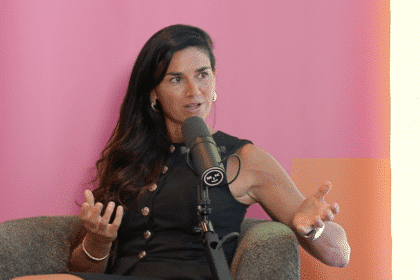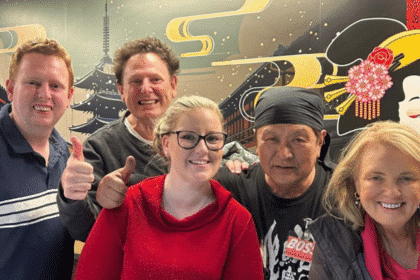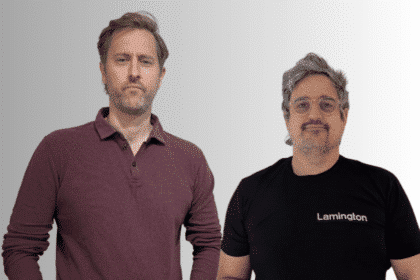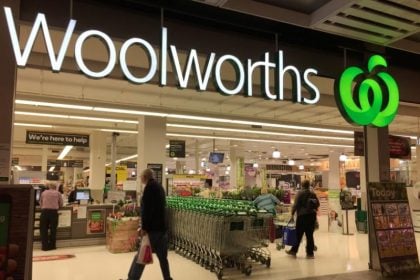Max Ryerson, CEO of digital strategy company Digital Izumi, says out-of-home’s ability to utterly transform itself to a major digital player over the past five years is set to pay big dividends for the industry here in Australia.
In an always-on social-media-driven digital age, there is a temptation to believe the Out-Of-Home (OOH) media industry — roadside billboards, bus shelters, street furniture, advertising in airports, train stations, undergrounds, down the road, inside your local shopping mall — may find it harder to maintain, let alone increase, its share of consumer attention. That has lead some commentators to believe that advertisers may relocate their budgets to other, perceivably more effective, channels to reach consumers.
Further from the truth these thinkers could not be. According to the CEO of JC Decaux (Australia), Steve O’Connor, Danni Robinson (JC Decaux (Australia) Head of Innovation & Technology), oOh Media’s CEO Brendon Cook, and a number of media planners and buyers, the OOH advertising industry is well and truly vibrant and growing. Since the GFC in 2009, the Australian OOH industry has demonstrated an impressive 15 out of 16 quarters of growth. 2013 revenues alone grew 7.1 per cent year-on-year.
In July 2011, OOH agency Kinetic Worldwide released a global digital OOH study which suggested that “with the rise of smartphones and tablets, mobile consumers have an increased appetite for engagement and interactivity with digital out-of-home.”
The industry — like many others — clearly sees the future in mobile and location-based services that deliver contextual relevance. There is a growing trend that people are going out more and spending more time out of their homes, increasing the relevance of OOH advertising. In fact, OOH is in the top three consumer channels with the best ROI.
The industry is remaining relevant despite, and in more and more cases as a result of, smartphone usage. Major industry players have invested — and continue to invest — in the latest technology, testing and trialling innovations, in order to satisfy their advertising clients today. With the continued decrease in tech costs, the perceivable future depicted in popular culture is getting closer and closer to reality. The miniaturisation of technology is also a key driver to delivering this seamless mobile-driven consumer experience.
Resurgence
In fact, there seems to be a resurgence in OOH media. This is perhaps a result of information and social media overload or a desire to disconnect in periods of downtime such as commuting. However, OOH media is quickly becoming the connector between offline and mobile online for brands and advertisers.
Today’s world is full of missable media — print advertising no longer has the cut-through it did as it has lost a considerable amount of share of attention with the consumer. OOH media, on the other hand, is unmissable. Leveraging technology and strategic location placements, OOH media can combine social, mobile and OOH advertising to deliver an immersive experience at a time and place that will incite a desired consumer behaviour. In fact, through the use of emerging technology, the medium is more valuable than ever before as it now has the ability to build more value above and beyond mobile online. A Minority Report-like world isn’t due in 2015, but it may well be the reality in a decade or more.
Regulations still hold back some of the potential of OOH advertising, but OOH network owners are working closely with all parties to address public and government concerns over a range of possible issues issuing from OOH advertising in urban areas and on roads — including light pollution and possible dangers from distraction.
In certain markets and specific cities, the initial rush to deploy digital technology in the OOH space wasn’t considered, and resulted in what could be seen as regressive change instead of progressive. In Los Angeles, for instance, light pollution wasn’t taken into consideration and digital billboards had to be taken down due to pubic concern.
However, in other markets such as Hong Kong and Las Vegas, we can see examples of the future of OOH media on a city-wide scale. In these cities, very-large-format digital billboards can be found illuminating consumer experiences. In Hong Kong we see the use of entire buildings as OOH media opportunities. Below is a recent photograph of this kind of larger-than-life OOH medua, promoting the Hong Kong Sevens rugby championship.
This type of deployment brings us closer and closer to the world created in such iconic movies as Minority Report, Blade Runner, and The Fifth Element.
Technology, including the use of Bluetooth Low Energy (BLE) beacons — also known as iBeacons — is readily available today. It really comes down to how brands, advertisers, and marketers want to use the technology, and how they piece it all together to deliver memorable experiences for the consumer they are trying to target. Creativity — not just technology — is still a big factor to delivering such futuristic worlds and truly incredible, immersive, and relevant consumer experiences.
We have started to witness great examples of how OOH media technology can deliver incredible consumer experiences.
Plan UK “Because I’m A Girl”
Plan UK ran a bus shelter ad campaign that used facial recognition technology to detect gender and target different messages at women and men. Female viewers saw a short video on girls around the world who aren’t able to make their own life choices. Men, on the other hand, were shown statistics on the issue in order to make a point about the issue of choice.
Porsche
The world’s first car recognition digital OOH billboard campaign was aimed at Porsche drivers. The billboard sensed when a Porsche was within range and automatically changed the screen’s message. Located at Melbourne Airport, the billboard used a camera positioned 300 meters away to analyse approaching traffic — including the vehicle’s make and model — in real-time. When it identified the car as a Porsche it triggered the message “It’s so easy to pick you out of a crowd”.
Women’s Aid
To coincide with International Women’s Day, remarkable digital billboards about domestic violence were created. They used facial recognition to recognise when people were paying attention to the image of a bruised woman. As more people looked at the ad, her bruises and cuts healed faster. The message: don’t turn a blind eye to domestic violence. It was a great example of facial recognition technology in OOH.
British Airways
British Airways unveiled a great use of technology in OOH billboards with its #lookup digital billboards that showed kids pointing to actual British Airways planes as they passed overhead.
Pepsi MAX
Pepsi MAX launched a bus shelter campaign where unsuspecting bus passengers were terrified by a glass screen showing the street scene overlaid with apocalyptic scenes of mayhem and destruction.
Wicked — The Musical
When Wicked — the most-awarded new musical and Broadway’s number one show — launched in Sydney last October, it ran an interactive OOH campaign with JC Decaux. Featuring interactive custom-built panels, the campaign puts the magic of the witches of Oz into the hands of Sydneysiders. With the press of a button, passers-by could cast a spell — accompanied by a clap of thunder, a swirl of smoke and a tune from the hit musical. The showcase panels also featured an automated Wicked clock that counted down the minutes until the witching hour.
“We are in the midst of this future really starting to come alive,” says Brendon Cook. No doubt these will grow in number and become ’normal’. Until then, creatives will have to plan better and be more technologically creative to seamlessly combine consumer channels and deliver exceptional emotionally connective experiences to consumers. Too often today, creative agencies rush to OOH networks with a campaign that they feel needs to be in market in an impossible time frame if these campaigns were to take advantage of the technologies that could create far greater conversions, retentions, and advocacies. Lack of proper planning is currently a barrier to a larger number of memorable and valuable campaigns.
Consumer education is also a factor in adoption of OOH technology capabilities and advertisers’ creations, though it’s definitely catching up. In markets such as Australia, as well as other western markets, tap or scan is gaining momentum as NFC applications burgeon and scanning experiences keep improving. In markets like China, scanning has permeated society — from OOH installations to payments, scanning has become a natural behaviour and is the driver behind a hugely mobile active market.
Scanning has reached such critical mass in China because it has been delivered by major social platforms like Tencent’s WeChat — something that is still to happen in other markets.
The future is data
The future of OOH media will also lie in the amount of data it is likely to create. What the future will look like will depend on how this data is analysed and made sense of in order to help make investment decisions for both OOH media network owners as well as advertisers.
What OOH advertising delivers over a number of other advertising channels is the ability to deliver mass reach with the ability to engage one-on-one with the target audience in a contextually relevant location.
For media planners it’s also an important branding channel. It’s always part of the mix unless budget doesn’t allow for it. “OOH is a good way to capture your audience when they have downtime,” says Stacey Brown, media planner at ACMN. “For example, waiting for a train, sitting on a bus or train when there is no reception, or their battery is flat or they have seen all there is to see on Facebook and Instagram.”
Companies like HID are getting into the space with technology which will help the likes of JC Decaux and oOH Media deliver new experiences to consumers and better analytics to advertisers. In HID’s case, its trusted tag service is looking very promising with the growth of NFC-driven consumer behaviours.
Could OOH advertising be programmatically bought? A question that Google may be considering, but until more panels are digital that’s unlikely. It’s also unlikely as digital OOH media opportunities are likely to leverage more technology than simple digital signage screens, and those best locations will still command a premium that is best sold away from a grouping of locations booked by a media-planning bot.
OOH is definitely poised to keep growing and be more and more digitally omnipresent as advertisers become more savvy and creative in their demands of the medium as well as longer-term thinking in planning their OOH possibilities. What seems certain is that major players like oOh Media and JC Decaux will be there to deliver, and likely even suggest, solutions to satisfy the digital and innovative appetites of their clients. It is definitely an industry that is evolving to meet demand and opportunity, often leading opportunity over demand.
The OOH channel will stand the test of time and will continue to play an important role in the delivery of an omni-channel consumer experience. It’s hard to imagine a world without advertising around us — whatever form it will take. It not only sells to the audience, it also entertains us.
This article originally appeared on: www.which-50.com
















